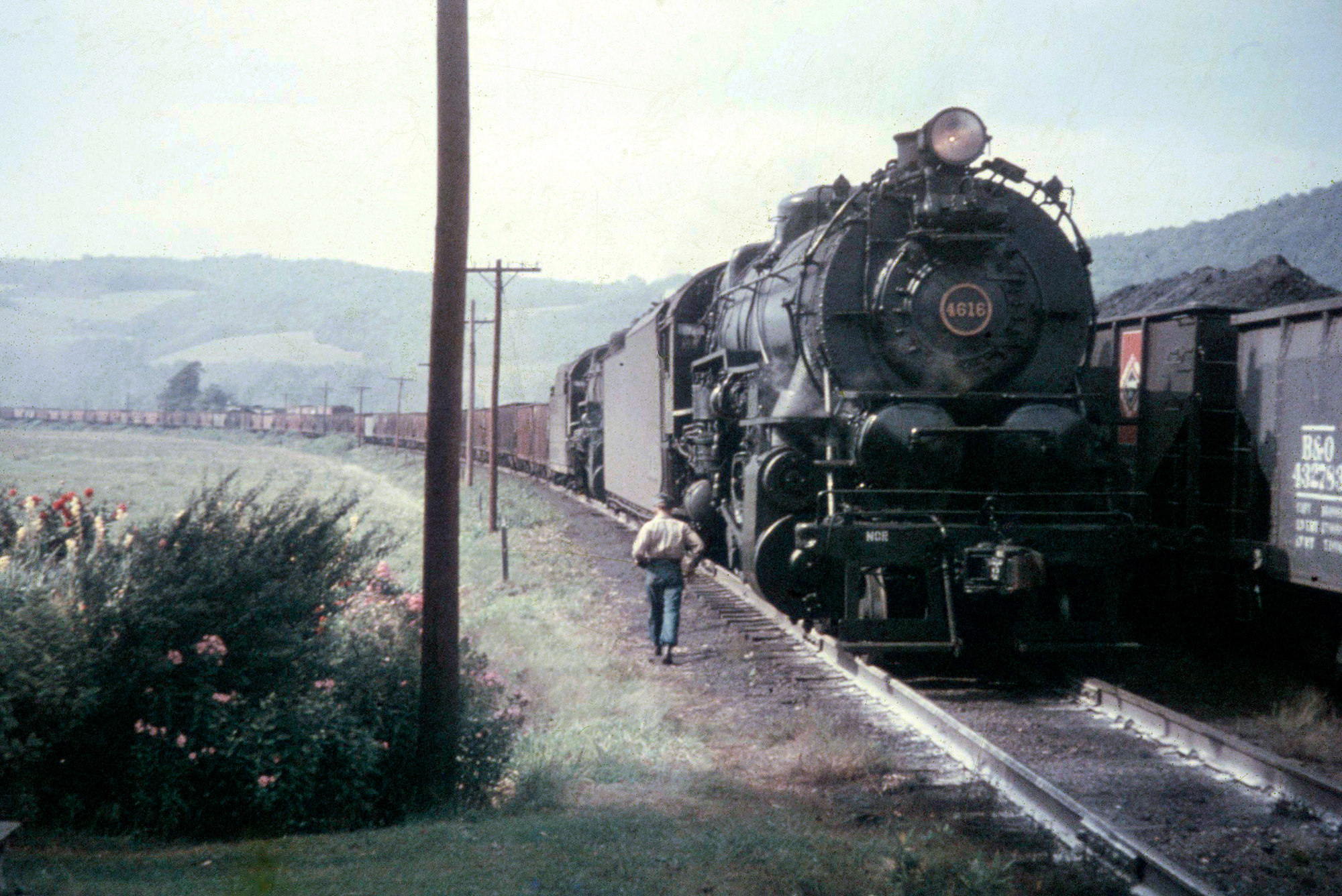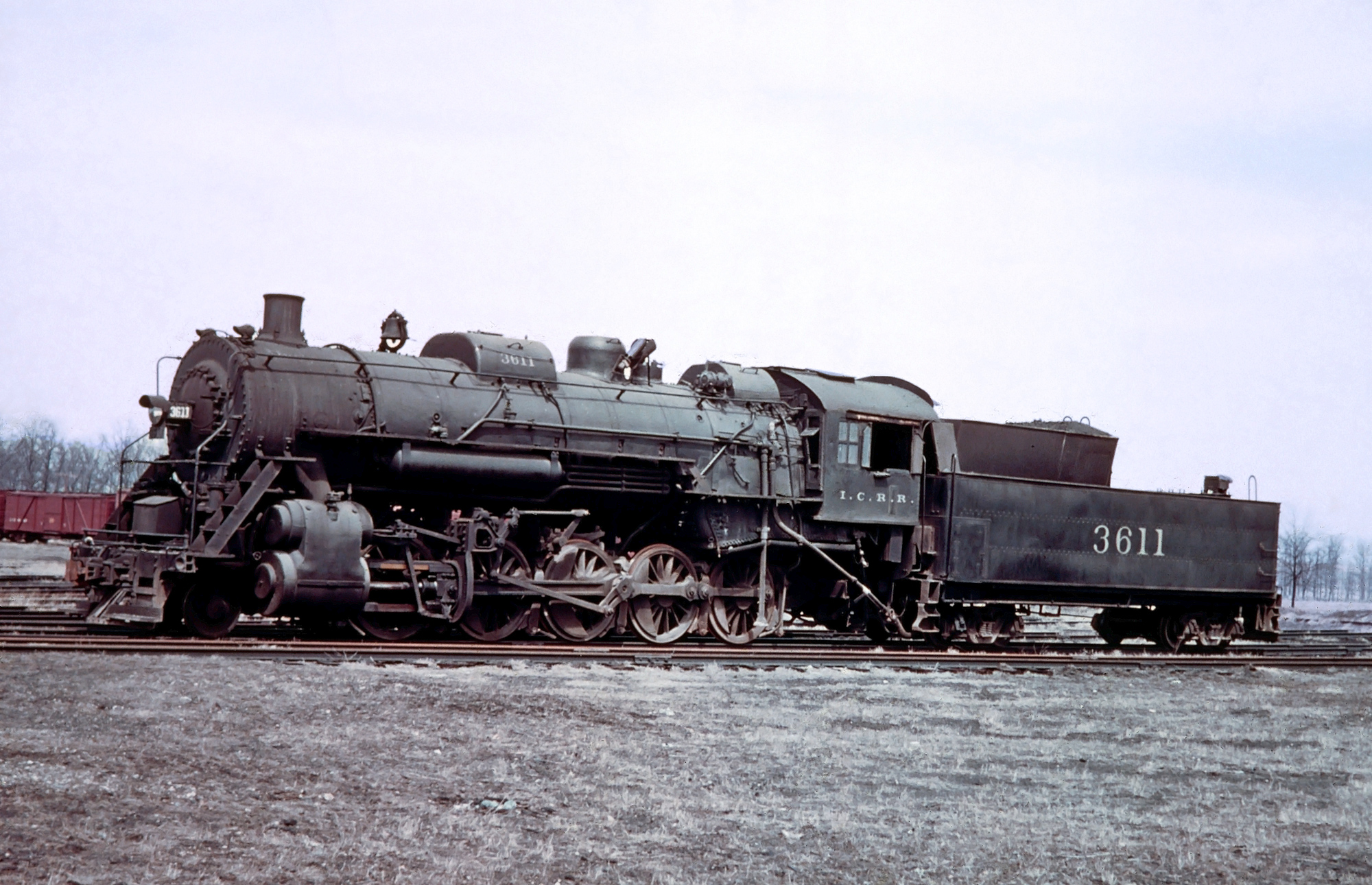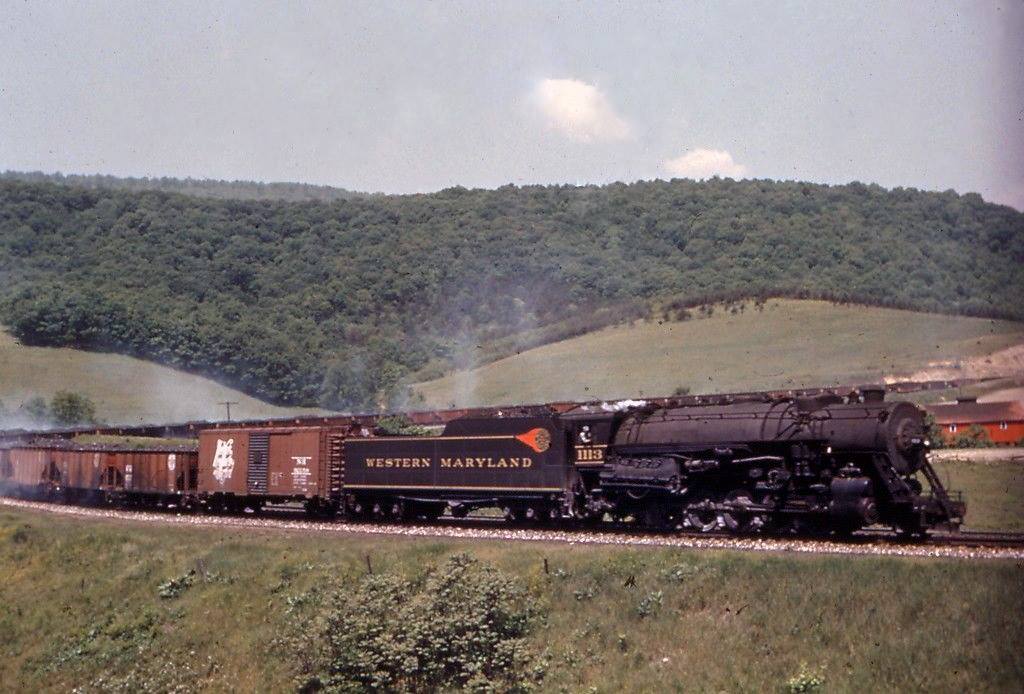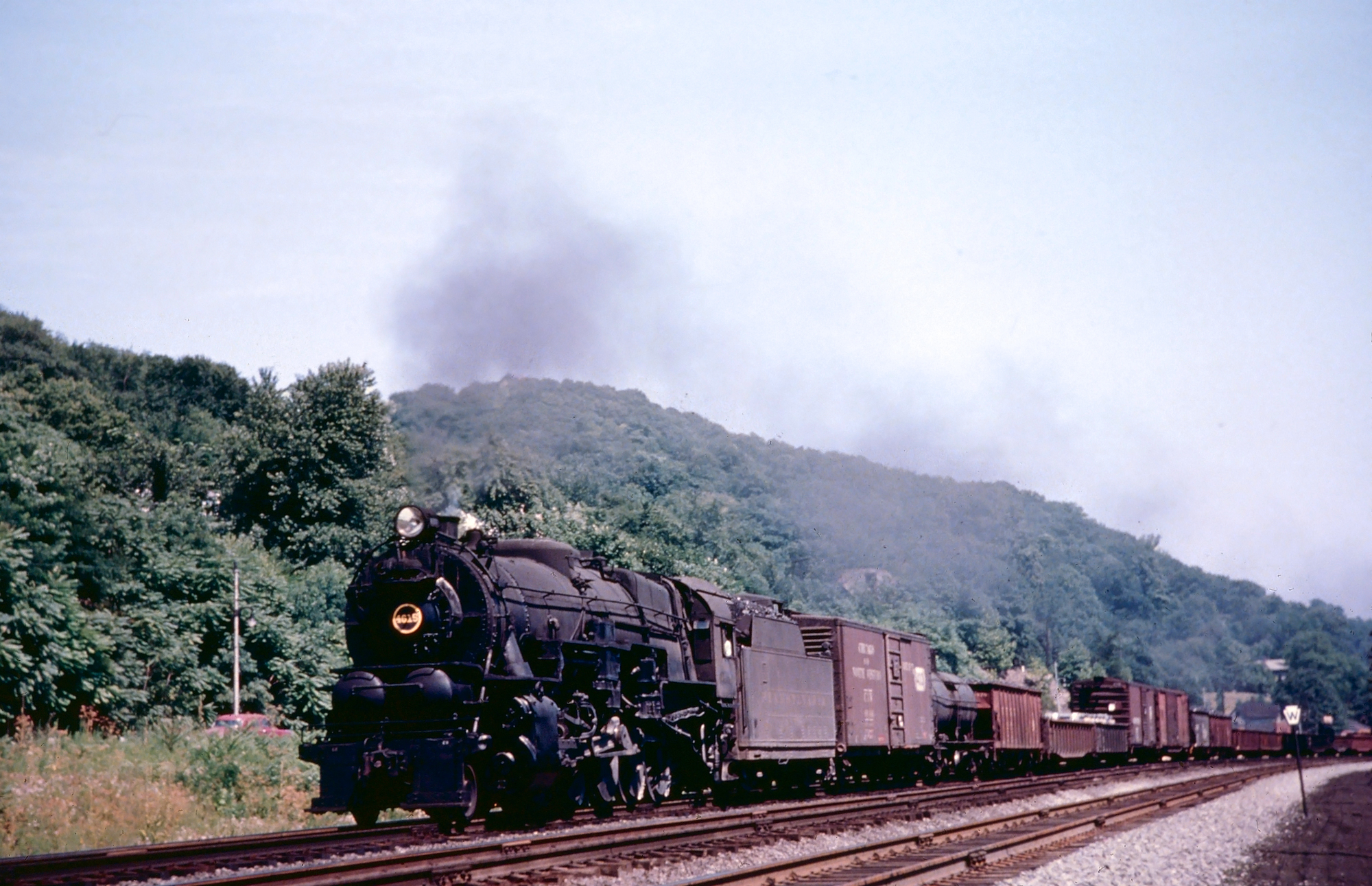2-10-0 "Decapod" Locomotives: History, Specs, Survivors
Last revised: November 1, 2024
By: Adam Burns
The Decapod is not generally considered a success. Plagued by numerous issues, the 2-10-0 is often criticized for being underpowered, poorly balanced, and delivering a rough ride.
Despite these challenges, it offered one significant advantage; five driving axles, which offered impressive tractive effort. This feature made them particularly valuable for heavy drag service.
The Decapod found particular favor with two eastern railroads: the Pennsylvania and Western Maryland.
The Pennsy not only mastered but also championed the 2-10-0, enhancing their utility and performance. Meanwhile, the WM was known for operating the heaviest Decapods in regular service, a testament to their robust capabilities in demanding environments.
Today, the legacy of these mighty locomotives endures, with just over a dozen preserved across various locations. Among these, two remain operational, serving as a living monument to the era when these giants ruled the mountainous routes. This ongoing preservation effort keeps alive the rich history and significant contributions of the 2-10-0 to American railroading.
Photos
 A pair of the Pennsylvania Railroad's burly 2-10-0s, #4616 and #4243, have a 9,000-ton iron ore train on the Shamokin Branch near rural Crowl, Pennsylvania during the 1950s. Philip Hastings photo. American-Rails.com collection.
A pair of the Pennsylvania Railroad's burly 2-10-0s, #4616 and #4243, have a 9,000-ton iron ore train on the Shamokin Branch near rural Crowl, Pennsylvania during the 1950s. Philip Hastings photo. American-Rails.com collection.History
The Decapod can be viewed as a direct evolution of the highly acclaimed Consolidation. In a twist of historical irony, the prototype for the first 2-10-0 was constructed in 1867, merely a year after the debut of its predecessor, the 2-8-0. Notably, the Lehigh Valley had the distinction of being the first to operate these innovative locomotive types.
Despite its promising beginnings, the LV found little practical use for the design. The locomotive’s lengthy and rigid wheelbase led to operational challenges, prompting the railroad to modify it back into a Consolidation.
Throughout the latter 19th century, the 2-8-0 saw significant enhancements and quickly became the preferred standard for main line power.
In contrast, the Decapod languished in relative obscurity until a resurgence in the 1880s signaled new opportunities and adaptations for this powerful yet initially overlooked locomotive class.
First Examples
In 1886, a pivotal order by the Northern Pacific marked a significant turn for the Decapod. Tasked with the challenging grades of Stampede Pass until the completion of a new tunnel, the railroad turned to Burnham, Parry, Williams & Company (Baldwin) to commission two of these locomotives.
Designated as 1 and 2 and classified as Class M, these locomotives set new standards in power, each capable of generating 35,000 pounds of tractive effort and weighing a formidable 135 tons.
Despite their impressive capabilities, the Decapod did not widely catch on in the early 20th century. Several railroads experimented with the model but ultimately found it lacking in various aspects, including:
- Its long wheelbase precluded operation through sharp curves.
- No trailing truck resulted in a small firebox and an underpowered locomotive.
- Small drivers, which could not properly balance the incredible piston thrusts caused not only a very rough rided but also speeds greater than 50 mph.
 Illinois Central 2-10-0 #3611 is seen here in Bluford, Illinois, circa 1953. This was one of 15 Decapods (#3610-3624) the IC's Paducah Shops crafted from the cylinders and frames of 2900-class 2-10-2s with the boilers of 1500-class 2-8-2s in 1939. The fleet was scrapped in 1955. Fred Byerly photo. American-Rails.com collection.
Illinois Central 2-10-0 #3611 is seen here in Bluford, Illinois, circa 1953. This was one of 15 Decapods (#3610-3624) the IC's Paducah Shops crafted from the cylinders and frames of 2900-class 2-10-2s with the boilers of 1500-class 2-8-2s in 1939. The fleet was scrapped in 1955. Fred Byerly photo. American-Rails.com collection.Russian Types
The 2-10-0 faced a myriad of challenges that led to it being largely obsolete by 1916. Interestingly, a twist of fate brought the design back into the limelight.
As World War I escalated, Russia placed an extraordinary order for 1,200 2-10-0s from American manufacturers to bolster their war effort, signaling a surprising revival for this once-forgotten wheel arrangement.
This resurgence, however, encountered an unexpected hurdle. The Bolshevik Revolution in 1917 disrupted the completion and delivery of these orders, resulting in approximately 200 never making their voyage across the Atlantic.
 With brake shoes smoking, Western Maryland 2-10-0 #1113 (I-2) eases a heavy coal drag downgrade over legendary Helmstetter's Curve near Corriganville, Maryland circa 1950s. Bill Price photo.
With brake shoes smoking, Western Maryland 2-10-0 #1113 (I-2) eases a heavy coal drag downgrade over legendary Helmstetter's Curve near Corriganville, Maryland circa 1950s. Bill Price photo.With the industry then under the United States Railroad Administration's control these 2-10-0s were converted to American standards and put into service on various railroads including:
- Alabama, Tennessee & Northern
- Santa Fe / Kansas City, Mexico, & Orient
- Atlantic Coast Line
- Buffalo & Susquehanna
- Buffalo, Rochester, & Pittsburgh
- Detroit, Toledo & Ironton
- Durham & Southern
- Erie/New York, Lake Erie & Western
- Great Western Railway of Colorado
- Gulf, Mobile & Northern/New Orleans Great Northern/Gulf, Mobile & Ohio
- Illinois Central
- Lehigh & New England
- Minneapolis, St Paul & Sault Ste Marie (Soo Line)
- Nashville, Chattanooga & St. Louis
- New Orleans, Texas & Mexico
- Northern Pacific
- Osage Railway
- Pennsylvania
- Philadelphia & Reading
- Seaboard Air Line/Georgia Florida & Alabama
- Southern Railway
- El Paso & Southwestern/San Antonio & Aransas Pass/Southern Pacific
- St Louis-San Francisco Railway (Frisco)
- Western Maryland
- Wichita Falls, Ranger & Fort Worth
Surprisingly, these 2-10-0s proved quite reliable and several roads continued to operate theirs through the end of the steam era.
Pennsylvania Railroad
In 1916, coinciding with the flurry of international orders, the Pennsy embarked on refining the Decapod for heavy drag service. This strategic shift sought to optimize the locomotive's performance where robust power was essential.
Distinct from the Russian version with its 52-inch drivers, the Pennsy engineered their version - classified as I1s - with significantly larger 62-inch drivers and extended the wheelbase by approximately four feet. This adaptation was aimed at enhancing both power and stability, tailor-made for the demanding mountainous routes in their network.
Enhancements made to the PRR's Class I1s proved transformative. Thanks to the railroad's robust infrastructure, these locomotives were not only overall heavier but significantly more powerful.
The I1s boasted a tractive effort of 102,000 pounds—more than double the roughly 50,000 pounds of the Russian model. These attributes made these engines a formidable presence on the tracks, particularly suited for the demanding tasks required by the railway.
Despite their mechanical superiority, PRR's 2-10-0s was not universally beloved. Many crew members expressed disdain for their excessively rough ride. Nevertheless, the Pennsy remained committed to these powerful machines.
The railroad ultimately wound up with a fleet of 598 Decapods; 123 constructed by its own workshops and an additional 475 purchased from various manufacturers.
Western Maryland
As formidable as the Pennsylvania's fleet proved to be, the record for the heaviest Decapods falls to the Western Maryland Railway. Similar to the PRR, the WM utilized their 2-10-0s for heavy drag service, pushing the limits of locomotive performance.
These titanic engines, classified as I-1 and I-2, drew their innovative design from the railroad’s previously successful 2-8-0s.
This strategic adaptation not only leveraged proven engineering principles but also enhanced them to create some of the most powerful locomotives of the era. The result was a fleet that not only matched but exceeded the capabilities required for the demanding tasks they were built to perform.
 Pennsylvania 2-10-0 #4615 is seen here in freight service near Pittsburgh, Pennsylvania on June 7, 1953. Homer Newlon, Jr. photo. American-Rails.com collection.
Pennsylvania 2-10-0 #4615 is seen here in freight service near Pittsburgh, Pennsylvania on June 7, 1953. Homer Newlon, Jr. photo. American-Rails.com collection.Preservation
The Western Maryland managed to acquire an impressive fleet of 30 Decapods, numbered 1101-1130, predominantly crafted by Baldwin.
These potent engines were deployed extensively across the network, from the Thomas Subdivision to the Connellsville Extension, showcasing their versatility and robustness.
Interestingly, the WM seemed to master the design intricacies that had challenged others, particularly in terms of balancing. Engineers routinely reported the ability to operate these locomotives at speeds of 50 mph or higher without significant issues, a testament to their superior design and construction.
This effective utilization ensured that these powerful locomotives remained in active service well into the mid-1950s, a notably extended service life for steam locomotives of this era.
In the years following their retirement, the legacy of the Decapods has been preserved with several examples kept intact across the United States. Notably, two remains active; #90, originally of the Great Western Railway, now delights enthusiasts and tourists by operating annually on the scenic Strasburg Railroad in Pennsylvania's picturesque Amish Country. In addition, Frisco 2-10-0 #1630 currently operates at the Illinois Railway Museum in Union.
Extant Examples
| Engine Number | Class | Wheel Arrangement | Track Gauge | Original Owner/Preserved As | Current Location | Current Status | Builder Information | Notes |
|---|---|---|---|---|---|---|---|---|
| 1615 | Russian | 2-10-0 | 4' 8 ½" | Frisco | Missile Park (Altus, Oklahoma) | Display | Baldwin #58829 (1917) | - |
| 950 | G | 2-10-0 | 4' 8 ½" | Minneapolis, St. Paul & Sault Ste Marie (Soo Line) | Ashland, Wisconsin | Display | Baldwin #17914 (1900) | Built as Soo Line #600. |
| 1632 | Russian | 2-10-0 | 4' 8 ½" | Frisco | Belton Grandview & Kansas City Railroad (Belton, Missouri) | Display | Baldwin #48522 (1918) | Built as USRA #1199. Sold to the Southern Railway (#8033). In 1920 the locomotive was resold to the Frisco (#1632). |
| 203 | D-2 | 2-10-0 | 4' 8 ½" | Gainesville Midland | Southeastern Railway Museum (Duluth, Georgia) | Stored | Baldwin #60342 (1928) | Built as Alabama, Tennessee & Northern #402. Sold to Gainesville Midland in 1952. |
| 1625 | Russian | 2-10-0 | 4' 8 ½" | Frisco | Museum of the American Railroad (Frisco, Texas) | Display | Alco-Schenectady #58903 (1918) | - |
| 209 | D-3 | 2-10-0 | 4' 8 ½" | Gainesville Midland | Gainesville, Georgia | Display | Baldwin #61233 (1930) | Built as Seaboard Air Line #533. Sold to the Durham & Southern Railway in the early 1950s, and then to the Gainesville Midland (#209) in 1955. |
| 4483 | I1sa | 2-10-0 | 4' 8½" | PRR | Western New York Railway Historical Society (Hamburg, New York) | Display | Baldwin #56534, 1923 | - |
| 544 | Russian | 2-10-0 | 4' 8 ½" | SAL (GM) | North Carolina Transportation Museum (Spencer, NC) | Display | Alco-Brooks #58902 (1918) | Sold to the Gainesville Midland (#206) during the 1950s. |
| 1621 | Russian | 2-10-0 | 4' 8 ½" | Frisco | Museum of Transportation (St. Louis) | Display | Baldwin #48420 (1918) | - |
| 90 | 12-42-F | 2-10-0 | 4' 8 ½" | Great Western Railway | Strasburg Railroad (Strasburg, Pennsylvania) | Overhaul | Baldwin #57812 (1924) | - |
| 41 (401) | 12-42-F | 2-10-0 | 4'-8½" | Woodward Iron | Age of Steam Roundhouse (Sugarcreek, Ohio) | Display | Baldwin #60341 (1928) | Built as Alabama, Tennessee & Northern Railroad #401. Sold to Georgia Car & Locomotive Company in 1946, then resold to Woodward Iron in 1948. Acquired by the Mid-Continent Railroad Museum in 1964. |
| 1630 | Russian | 2-10-0 | 4' 8 ½" | Frisco | Illinois Railway Museum (Union) | Operational | Baldwin #47953 (1918) | - |
| 208 | D-2 | 2-10-0 | 4' 8 ½" | Gainesville Midland | Winder Chamber of Commerce (Winder, Georgia) | Display | Baldwin #61230 (1930) | Built as Seaboard Air Line #530. |
Sources
- Edson, William D. Steam Locomotives Of The Baltimore & Ohio: An All-Time Roster. Potomac: William D. Edson, 1992.
- Morrison, Tom. American Steam Locomotive In The Twentieth Century. Jefferson: McFarland & Company, Inc., 2019.
- Simpson, Walter. Steam Locomotive Energy Story, The. New York: American University Presses, 2021.
